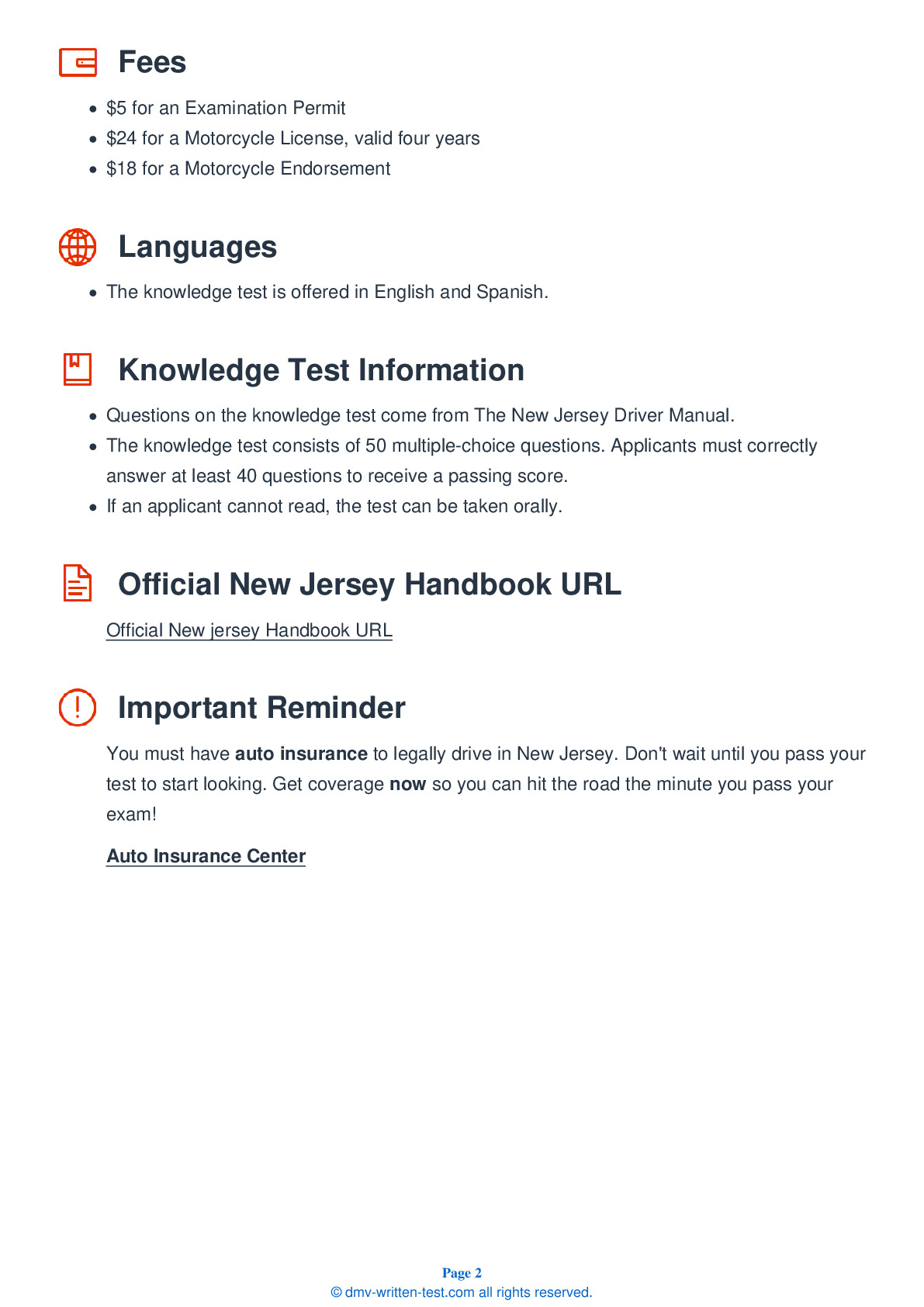2025 New Jersey Motorcycle Permit Test 6
The following questions are from real DMV written motorcycle permit tests. These are some of the actual permit questions you will face in New Jersey when getting your motorcycle learners permit. Each motorcycle theory practice test question has three answer choices. Select one answer for each question and select "grade this section." You can find this button at the bottom of the drivers license quiz. For a complete list of questions and answers for New Jersey please visit https://cheat-sheets.dmv-written-test.com/en/new-jersey/motorcycle.
Number of Tests
Number of Question
Passing Score
15. Brightly-colored helmets:
Explanation
Choosing a brightly-colored helmet is recommended. Not only will the helmet protect you in the case of a crash, but the bright color of the helmet will help other road users see you.
16. If braking in a curve:
Explanation
It is possible to use both brakes while turning, but it must be done with great care. Some of the tires' usual traction is being used to make the turn while the motorcycle is leaning, so less traction is available for stopping.
17. Anti-Lock Braking Systems (ABS) are designed to:
Explanation
Some motorcycles are equipped with an Anti-Lock Braking System (ABS). ABS is designed to prevent skidding and wheel lock-up when motorcyclists are stopping in straight-line, panic situations. ABS operates when maximum pressure is applied to both the front and rear brake controls. If electronic sensors detect the possibility of a wheel lock, brake hydraulic pressure is released then re-applied to maintain maximum braking effectiveness.
18. If you are feeling tired while riding, you should:
Explanation
You should avoid riding if you are tired. When making a long trip, take rest breaks at least every two hours to reduce the risk of becoming fatigued.
19. Riding gloves should:
Explanation
Gloves made of leather, or another durable material, should be worn when riding. They will provide you with an improved grip on the handgrips, as well as help protect your hands in the event of a crash.
20. Braking in a turn is:
Explanation
Braking in a turn is not as easy as braking on a straightaway. It is possible to use both brakes to brake in a turn, but the operator must know the proper technique and exercise great care.
21. In general, the body gets rid of almost ______ per hour.
Explanation




